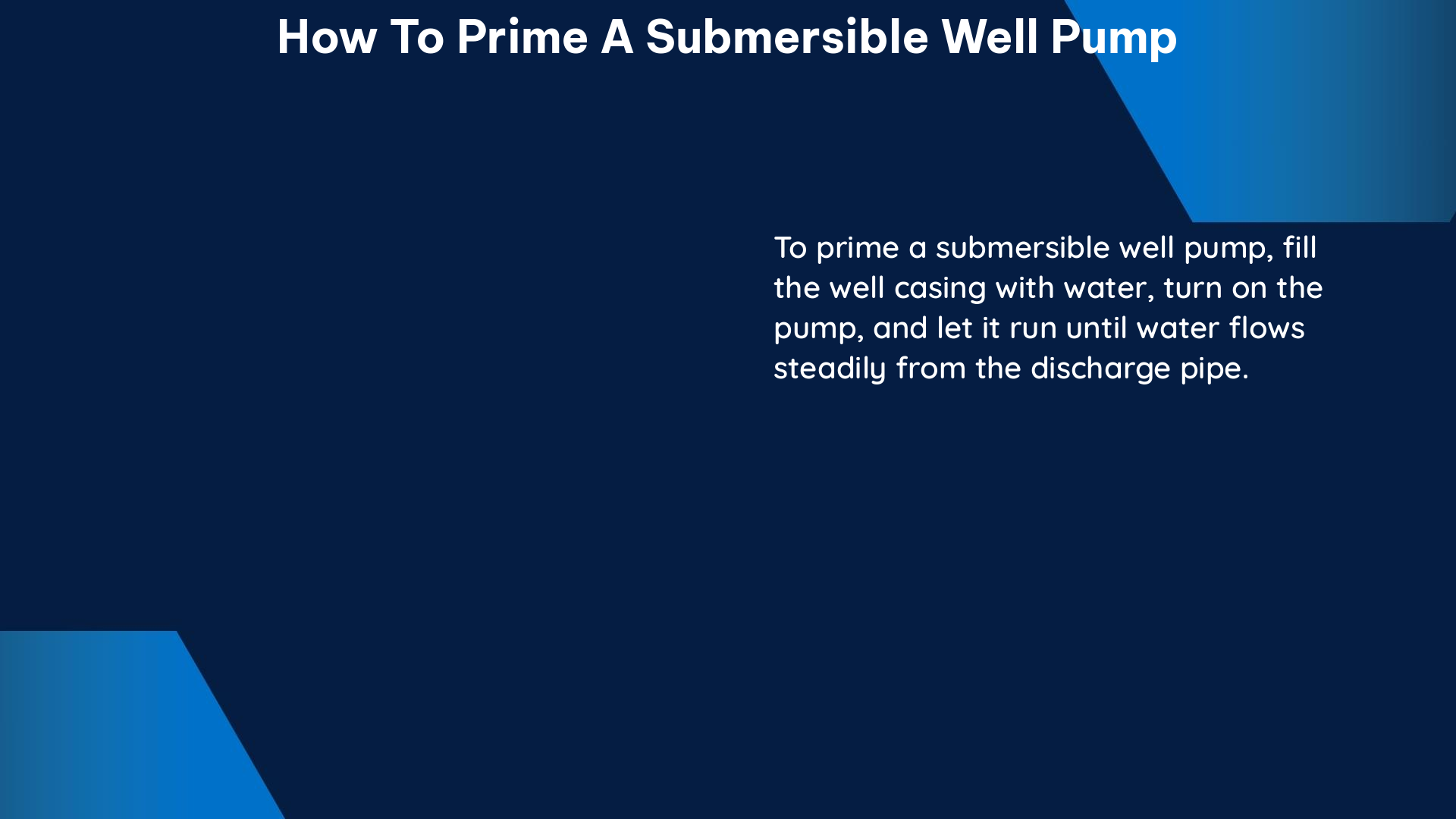Priming a submersible well pump is a crucial step in ensuring the proper functioning of your water supply system. Submersible pumps are designed to be submerged in the well, eliminating the need for manual priming in most cases. However, if you’re experiencing issues with your pump, such as a drop in water pressure, priming may be necessary to restore its performance. This comprehensive guide will walk you through the step-by-step process of priming a submersible well pump, providing you with the technical details and expert insights to ensure a successful outcome.
Preparing for Priming
Before you begin the priming process, it’s essential to take the necessary safety precautions. Disconnect the well pump from all power sources to avoid any electrical hazards. Locate the prime plug, which is typically a square or hexagonal-shaped plug situated at the top of the pump. Additionally, identify and open any release valves to prevent pressure buildup during the priming process.
Filling the Pump Casing

The key to priming a submersible well pump is to fill the pump casing with water until it overflows from the prime plug hole and the release valves. The amount of water required can vary depending on the size and model of your pump, but it’s crucial to fill the casing slowly to avoid air pockets and ensure proper suction.
To fill the pump casing, connect a water hose to the hole where the prime plug was removed. Use water that is the same as the intended use for the well water, as this will help prevent any contamination. Turn on the water and let the pump casing fill up gradually, monitoring the process closely. The water should continue to flow until it overflows from the prime plug hole and the release valves, indicating that the casing is fully primed.
Reinstalling the Prime Plug and Reconnecting Power
Once the pump casing is filled with water, replace the prime plug and secure it in its original position. Ensure that the plug is tightened properly to prevent any leaks or pressure issues.
Next, reconnect the pump to the power source. It’s important to note that the pump may initially sound harsh as it begins to draw water from the well, but this noise should subside after approximately 45 seconds as the pump reaches its normal operating state.
Verifying Proper Operation
To ensure that the priming process was successful, open a tap or faucet connected to the well system. Observe the water flow and pressure to confirm that the pump is working correctly. The water supply should be steady, reliable, and consistent in both delivery and pressure.
If you notice any issues, such as a drop in water pressure or an irregular water flow, it may be necessary to repeat the priming process or consult a professional for further troubleshooting.
Technical Specifications and Considerations
When priming a submersible well pump, it’s important to consider the specific technical details and requirements of your pump model. Here are some key factors to keep in mind:
-
Pump Capacity: The capacity of your submersible well pump, measured in gallons per minute (GPM), will determine the amount of water required to fill the pump casing during the priming process. Larger pumps will typically need more water to achieve proper priming.
-
Pump Depth: The depth of your submersible well pump can also affect the priming process. Deeper wells may require more water to fill the pump casing, as the water needs to travel a longer distance to reach the pump.
-
Pump Horsepower: The horsepower of your submersible well pump can impact the priming process. Higher horsepower pumps may require more water to fill the casing and may also generate more noise during the initial startup after priming.
-
Pump Inlet Size: The size of the pump inlet, typically measured in inches, can influence the amount of water needed to prime the pump. Larger inlet sizes will generally require more water to fill the casing.
-
Pump Manufacturer Recommendations: Always refer to the manufacturer’s instructions and recommendations for your specific submersible well pump model. They may provide detailed guidance on the priming process, including the recommended water volume and any special considerations.
By understanding these technical specifications and following the manufacturer’s guidelines, you can ensure a successful priming process and optimize the performance of your submersible well pump.
Conclusion
Priming a submersible well pump is a straightforward process, but it requires attention to detail and adherence to safety protocols. By following the step-by-step guide outlined in this comprehensive manual, you can effectively prime your submersible well pump and restore its optimal performance. Remember to prioritize safety, consult the manufacturer’s instructions, and seek professional assistance if you encounter any challenges during the priming process.
References:
- How to Prime a Submersible Well Pump
- Priming Your Well Pump
- How to Prime a Water Well Pump
- How to Prime a Well Pump: A Step-by-Step Guide

The lambdageeks.com Core SME Team is a group of experienced subject matter experts from diverse scientific and technical fields including Physics, Chemistry, Technology,Electronics & Electrical Engineering, Automotive, Mechanical Engineering. Our team collaborates to create high-quality, well-researched articles on a wide range of science and technology topics for the lambdageeks.com website.
All Our Senior SME are having more than 7 Years of experience in the respective fields . They are either Working Industry Professionals or assocaited With different Universities. Refer Our Authors Page to get to know About our Core SMEs.